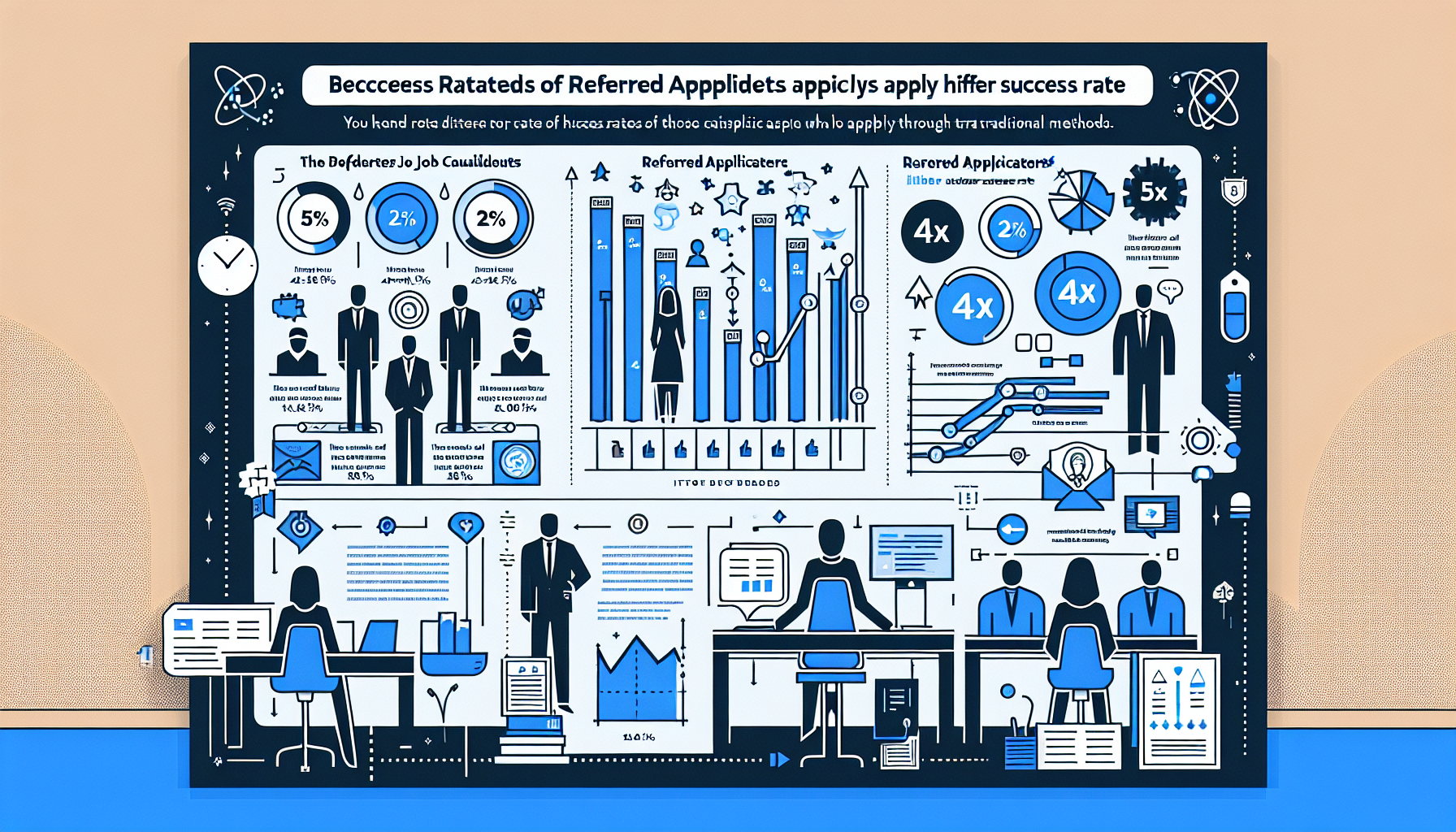Referred & Hired: Why Employee Referrals Are 4X More Likely to Land You the Job in 2025
Meta: Discover why referred candidates are 4X more likely to get hired. Learn proven networking strategies and templates to secure employee referrals that dramatically boost your job search success.
Here’s a stat that might surprise you: referred candidates are 400% more likely to get hired than those who apply through traditional channels! As someone who’s helped hundreds of job seekers navigate their careers, I can tell you that networking isn’t just about collecting LinkedIn connections – it’s about strategically positioning yourself for success. Whether you’re in the final stretch of your job search or just starting out, understanding how to leverage referrals could be the game-changer you need. Let’s dive into why referrals work and how you can get them, even if you think your network is limited!

The Power of Employee Referrals
Let’s talk about the incredible impact of employee referrals in the job market. Did you know that candidates who come through referrals are 4 times more likely to be hired? It’s true! Companies absolutely love referred candidates, and for good reason.
Think about it – when you’re referred by someone already in the company, you come with a built-in stamp of approval. It’s like having a personal endorsement before you even step through the door. This is why referred candidates often sail through the hiring process much faster than those coming in cold.
But don’t just take my word for it. The statistics speak for themselves. Studies show that referred candidates have a 40% higher chance of being hired compared to non-referred applicants. Not only that, but they tend to stay with the company longer too.
For employers, referrals are a goldmine. They save both time and money in the hiring process. On average, it takes 29 days to hire a referred candidate compared to 39 days for candidates from job boards. That’s a significant time saving!
Building Your Referral Network Strategy
Now that we understand the power of referrals, let’s talk about how to build your referral network. First things first, you need to identify your target companies. Make a list of places you’d love to work and start there.
Next, it’s time to map out your existing connections. You might be surprised at how many people you know who work at your dream companies. Don’t forget about your alumni networks either – they can be a goldmine of connections.
LinkedIn is your best friend here. Use their advanced search features to find second-degree connections at your target companies. It’s like playing Six Degrees of Separation, but for your career!
Finally, create your networking action plan. Set goals for how many people you want to reach out to each week. Remember, networking is a marathon, not a sprint.
Making the Perfect Referral Request
Timing is everything when it comes to asking for a referral. You don’t want to rush in and ask for a favor from someone you barely know. Build the relationship first, then when the time is right, make your move.
When you’re ready to ask, craft a compelling outreach message. Be clear about what you’re asking for and why you think you’d be a good fit for the company. Here’s a sample template you could use:
“Hi [Name], I hope this message finds you well. I’ve been following [Company] for a while now and I’m really impressed with [specific thing you admire]. I noticed that there’s an opening for [position] and I believe my skills in [relevant skills] would make me a great fit. Would you be open to referring me for this position? I’d be happy to send over my resume and any other information you might need. Thank you for considering this request!”
Remember to follow up appropriately, but don’t be pushy. And whatever you do, avoid common referral request mistakes like asking for a referral from someone you don’t know well or failing to do your research on the company and role.
Alternative Referral Sources
While personal connections are great, they’re not the only way to get referrals. Industry events and conferences can be goldmines for making new connections. Professional associations in your field are another great resource.
Don’t overlook virtual networking opportunities either. Online forums, webinars, and social media groups can all be great places to meet people in your industry.
And don’t forget about second-degree connections. If you know someone who knows someone at your target company, that’s still a valuable connection!
Lastly, many universities maintain alumni databases that can be incredibly useful for networking. If you’re a recent graduate, this could be a great place to start.
Maximizing Your Referral Success Rate
To really boost your referral success rate, focus on building relationships before asking for favors. Demonstrate value to your network by sharing interesting articles, offering help when you can, or making introductions.
Maintaining professional relationships is key. Keep in touch with your contacts even when you don’t need anything. A quick check-in every few months can go a long way.
Remember, referrals are a two-way street. If someone refers you, look for opportunities to return the favor down the line.
Finally, make sure to track your referrals and follow up on them. A simple spreadsheet can help you keep track of who you’ve reached out to, when, and what the outcome was. This can help you refine your approach over time and increase your success rate.

Conclusion
Remember, your network is more powerful than you think! By implementing these strategies and using our proven templates, you can tap into the incredible 4X advantage that referrals provide. Start today by identifying just one potential referral connection and taking action. Your dream job might be just one introduction away!




